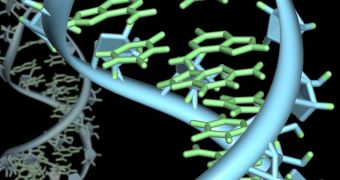An international collaboration of scientists has recently developed a new approach to treating diseases such as atherosclerosis and cancer. Their technique relies on the use of short RNA snippets, which can be used to shut down a very specific gene on immune cells, therefore reducing inflammation.
Scientists at the Massachusetts Institute of Technology (MIT) led the study, which also involved colleagues from the Massachusetts General Hospital (MGH), Harvard Medical School, Brigham and Women’s Hospital, Alnylam Pharmaceuticals, Harrison School of Pharmacy and Seoul National University, in South Korea.
Details of the new investigation were published in the October 9 issue of the top scientific journal Nature Biotechnology. Experts Daniel Anderson, an associate professor in the Harvard-MIT Division of Health Sciences and Technology, and MIT professor Robert Langer led the study.
Researchers decided to focus all their efforts on understanding and harnessing the power of RNA interference. Ribonucleic acid can be used to shut down genes in bulk or in specific orders, but experts need to have a very good understanding of what they are doing in order to avoid inflicting damage.
As a delivery system, the team opted to use lipidoids, which are fat-like molecules. In a series of experiments conducted on lab mice, the team was able to successfully reduce inflammation by using RNA snippets, without causing any type of adverse side-effects.
The most difficult part of influencing inflammation is learning not to overdo it. While excess inflammation can lead to the development of numerous medical conditions, it is a natural defense mechanism at its origins. Therefore, reducing it needs to be done with caution.
“After a short burst of inflammation, you want it to be dialed down. In disease, it continues to linger in the tissue and promote inflammation,” MGH Center for Systems Biology assistant professor Matthias Nahrendorf explains.
The investigator, who also holds an appointment with the Harvard Medical School, was the senior author of the paper. He explains that immune system cells called monocytes were the main target of the current investigation.
A molecule called MCP1 is responsible for recruiting these cells, by binding to a protein called the CCR2 receptor. This target area is located on the surface of monocytes. When RNA snippets were delivered at the inflammation site, MCP1 failed to connect to CCR2, therefore reducing its response.
“From a conceptual viewpoint, such a strategy could, if successful in humans, have a significant protective effect in patients following [a heart attack],” explains Albert Einstein College of Medicine cardiologist and professor of medicine Nikolaos Frangogiannis.

 14 DAY TRIAL //
14 DAY TRIAL //